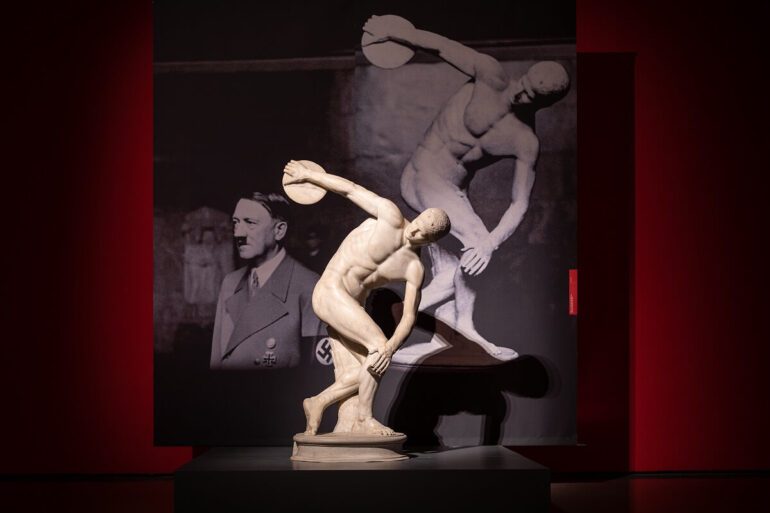Over 100 artworks tell the incredible feat of saving Italy’s artistic and cultural heritage during the Second World War
Until 10 April 2023, the museum of Scuderie del Quirinale in Rome presents the exhibition ARTE LIBERATA 1937-1947 Masterpieces saved from war, curated by Luigi Gallo and Raffaella Morselli and organised by Scuderie in collaboration with the National Gallery of the Marche, ICCD – Central Institute for cataloguing and documentation and Archivio Luce – Cinecittà.
The collection, distributed in ten exposition halls, is made of more than one hundred masterpieces saved in the period between the two World Wars and, through a collaborative effort of more than forty museums and institutes, it brings together an extensive documentary, photographic and audio panorama.
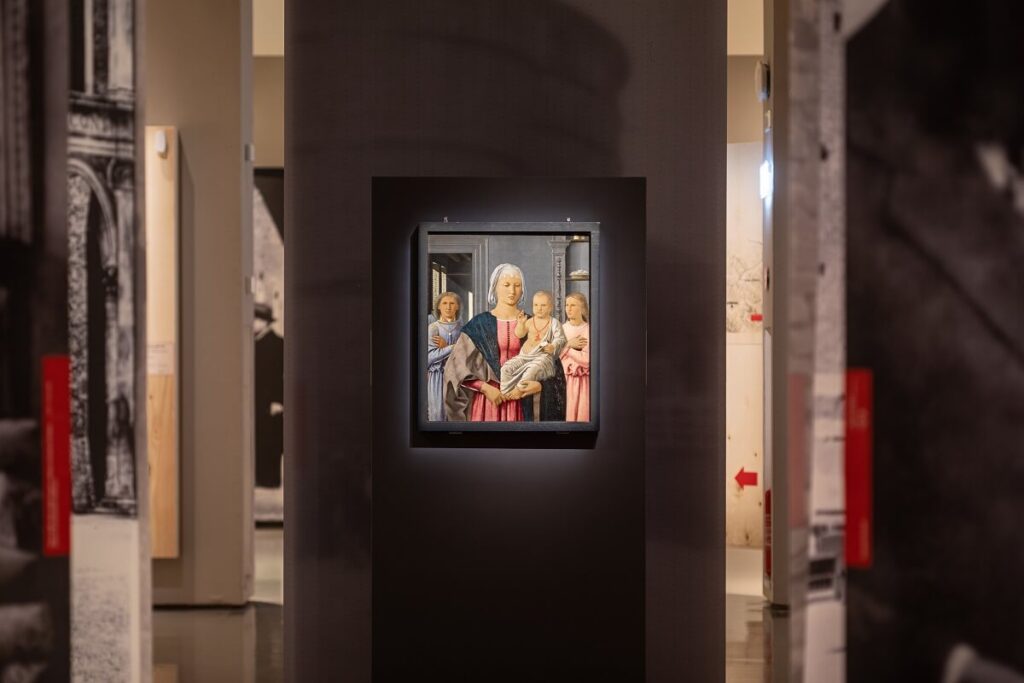
At the centre of the project is the idea of paying a tribute to all those men and women who, despite all the logistic challenges, in the dramatic contingency of war, interpreted their profession in the name of a common interest, aware of the universality of our heritage to be saved.
Starting from the first floor of the museum, the narrative is articulated into three strands, displaying statues, oil paintings, period photographic images and recordings. Right from the beginning, visitors are invited to take a step into the past to understand the historic work of saving Italian works of art from the dangers of the second World War.
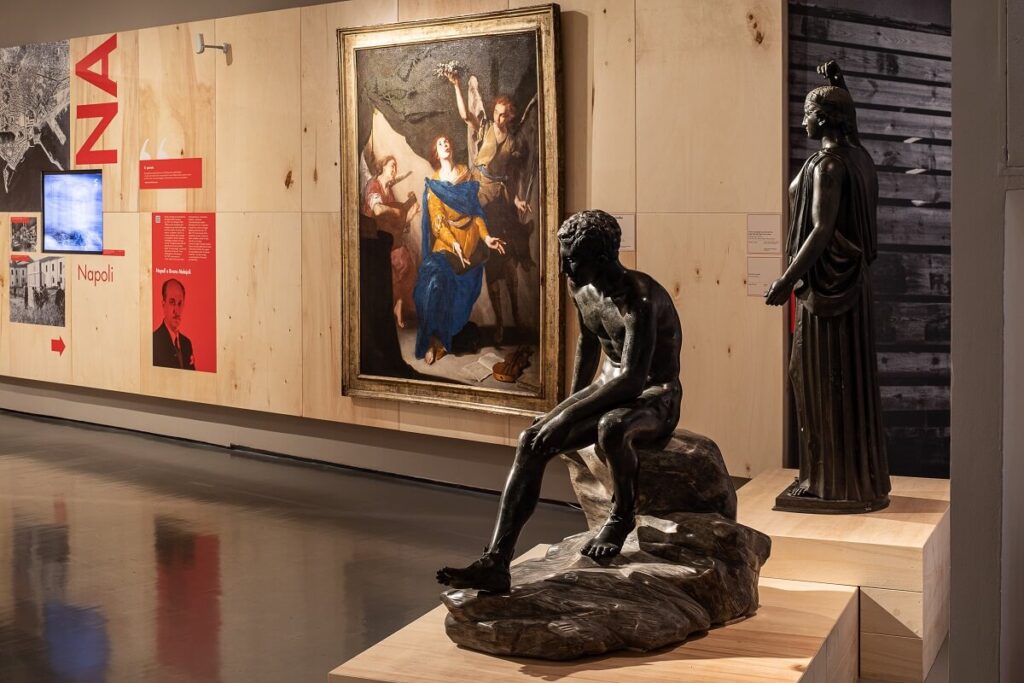
The first thread– Forced exports and the art market – refers to the alteration suffered by the art market in the aftermath of the signing of the Rome-Berlin axis (1936). Visitors can admire the ideal representation of physical strength in the marble sculpture of the Discobolus Lancellotti (constrained since 1909), a Roman copy of the famous bronze by Mirone – one of the highlights of the exhibition -, the bronze statue of the Fawn from Villa of the Papyri and the masterpieces from the Contini Bonacossi collection in Florence.
The second core – Movements and recoveries – refers to 1939, when, with Hitler’s invasion of Poland, Minister of Education Giuseppe Bottai set in motion the operations to secure the cultural heritage, with the consequent elaboration of the plan to move works of art.
Many stories unfold through the exhibition set: the relations between Italian superintendents and the Vatican, the efforts of individual officials to inventory and hide cultural assets in Lazio, Tuscany, Naples, Emilia and Northern Italy.
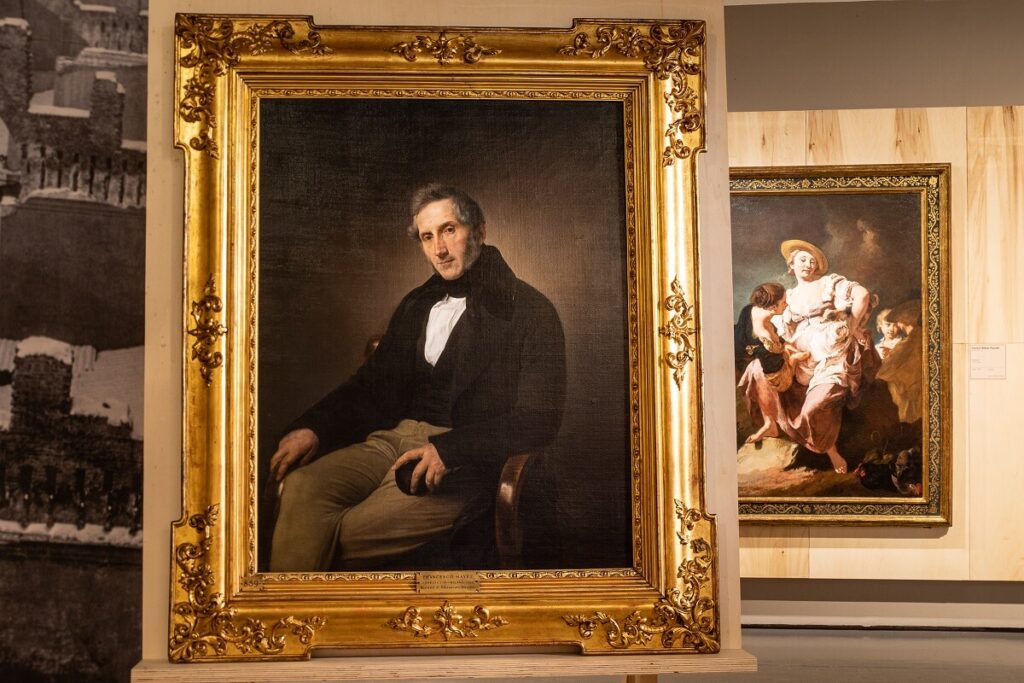
One of the most interesting aspects of this exhibition is the space dedicated to recognise the role of women curators during the World Wars. The deep commitment of Fernanda Wittgens, Palma Bucarelli, Noemi Gabrielli, Jole Bovio and others made it possible to save some of the most valued Italian artefacts.
Among the key figures in this section is Pasquale Rotondi, the young superintendent from the Region of Marche who was commissioned to set up a national depository and rescued masterpieces from Venice, Milan, Urbino and Rome in the deposits of Sassocorvaro and Carpegna, totalling about ten thousand works in his custody.
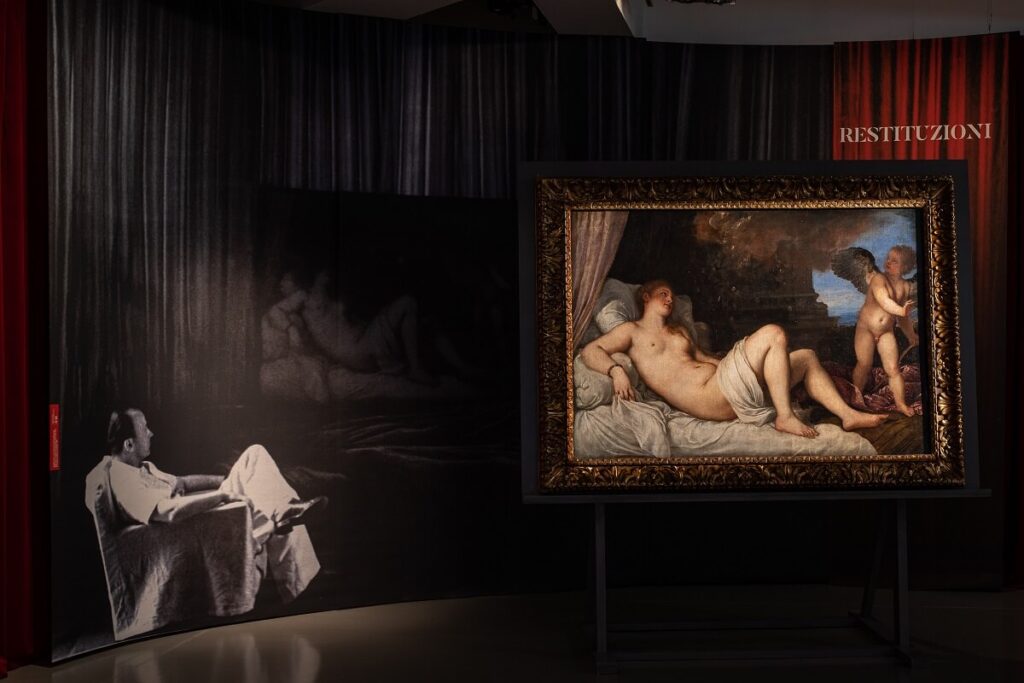
The third and final strand – the end of the conflict and the restitutions – considers the missions for the recovery and preservation of stolen works at the end of the war.
With the end of the war, the adventure of returning stolen Nazi property began, with over six thousand works found to date.
While walking through the gallery space, don’t miss out on some works of the highest artistic value that have fortunately survived:
- Titian Vecellio’s Danae, from the National Museum of Capodimonte (Naples). Visitors can find the famous painting in the last hall;
- Santa Palazia by Giovan Francesco Barbieri known as Guercino;
- The Madonna of Senigallia’s oil painting by Piero della Francesca (1474);
- The famous portraits of the literate Alessandro Manzoni by Francesco Hayez, one of the leading artists of Romanticism in mid-19th-century Milan;
- Henry VIII by Hans Holbein the Younger, German-Swiss painter and printmaker, considered one of the greatest portraitists of the 16th century;
- The magnificent wooden globe by the cartographer Vincenzo Maria Coronelli (Venice, 1650 – 1718) from Montecassino’s National Museum Public Library.
Until April, 10 2023
SCUDERIE DEL QUIRINALE
Via XXIV Maggio 16, ROME
Opening times: Monday to Sunday 10am – 8pm
Tickets: Full 15€ – Reduced 13€


